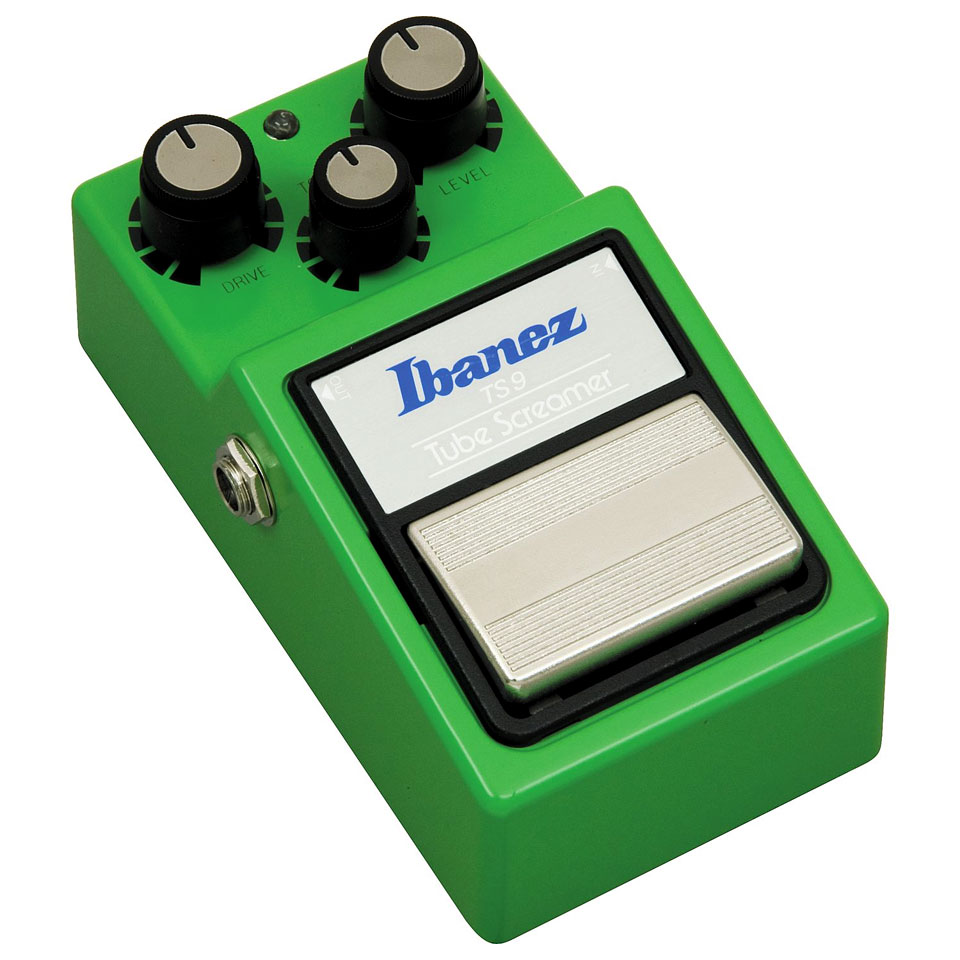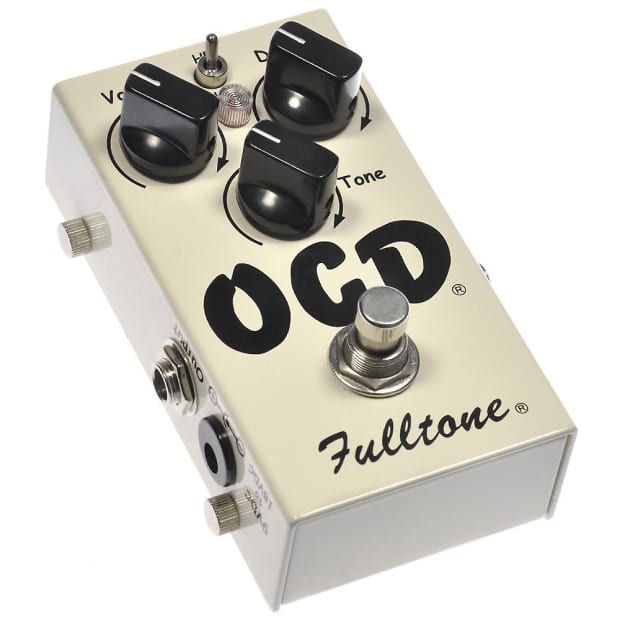 The world is strange, people are crazy, and the extent to which this is true can sometimes be seen in market dynamics. I am by no means an economist, but as a buyer and sometimes seller of electronics, be it hi-fi or guitar electronics, I realise how sometimes it gets to the point of sheer madness. Now, allow the guitar that had once belonged to Jimi Hendrix, Eric Clapton or David Gilmour; the fetishism in this field can almost be understood, just as one can understand the desire of an enthusiast who also has considerable financial means to own an instrument that had once belonged to a music legend. Even if vintage guitars cost as much as a good new car of a certain level (indeed, vintage cars themselves can cost impressive sums of money), it’s fine… those who have so much money they don’t know what to do with it will invest in such purchases. But what I have seen happen within a few years before my eyes with a simple guitar pedal effect is surreal. Guitarists know what I’m talking about, others don’t (but who’s going to read me anyway): meet the Klon Centaur!
The world is strange, people are crazy, and the extent to which this is true can sometimes be seen in market dynamics. I am by no means an economist, but as a buyer and sometimes seller of electronics, be it hi-fi or guitar electronics, I realise how sometimes it gets to the point of sheer madness. Now, allow the guitar that had once belonged to Jimi Hendrix, Eric Clapton or David Gilmour; the fetishism in this field can almost be understood, just as one can understand the desire of an enthusiast who also has considerable financial means to own an instrument that had once belonged to a music legend. Even if vintage guitars cost as much as a good new car of a certain level (indeed, vintage cars themselves can cost impressive sums of money), it’s fine… those who have so much money they don’t know what to do with it will invest in such purchases. But what I have seen happen within a few years before my eyes with a simple guitar pedal effect is surreal. Guitarists know what I’m talking about, others don’t (but who’s going to read me anyway): meet the Klon Centaur!
The Klon Centaur is an analogue guitar effect that falls into the overdrive category. Overdrives are used to reproduce the distorted sound of a tube amp brought to saturation by the input sound generated by the guitar. There are plenty of overdrives for every pocket and every need. Then there are the ‘iconic’ ones, made famous by the fact that they have been used by famous guitarists or because they have had such worldwide success that they have become the quintessential overdrives. And this applies to any other type of guitar effect pedal.
In the early days of blues/rock music, when people began to use electric guitars and turn up the volume of amplifiers, they began to find that the amplifiers, saturating as they approached their limits, generated a distorted sound that actually sounded good in that music. As the size and power of the amplifiers increased, that now-desired limit was increasingly being reached at very high sound levels. In the 1980s, the Japanese company Ibanez put a pedal on the market that was specifically designed to saturate the tubes of an amplifier and was nicknamed Tubescreamer. Its circuit was designed to generate a peak around 730 Hz, in the middle band of audible frequencies, attenuating the lower and higher frequencies in a certain way. When a valve amplifier goes into saturation, the bass and treble can often be a bit annoying and are always overpowered and masked by instruments that are no more powerful than a guitar, such as bass and drums. The Tubescreamer not only made the tubes ‘scream’ by sending them into saturation, but also allowed the guitar to be heard when needed. As they say in the jargon, by enhancing the instrument’s own midrange frequencies, it allowed the guitar sound to ‘come out of the mix’.
The first model, the TS808, was adopted by many professional guitarists, including Stevie Ray Vaughan, famous for using even two in succession, even the later version called TS9. A tubescreamer can also be used purely as a ‘booster’, holding the knob that controls the amount of distortion at or near zero, and turning up the volume of the pedal itself. Thus it acts as a pure tube-amp overdrive. But if the amplifier is powerful, very high volumes are required to bring it to those conditions. Therefore, you can choose to have the Tubescreamer itself generate the desired distortion by turning that ‘gain’ knob back up.
In the 1990s, with this idea in mind, an American engineer by the name of Bill Finnegan experimented a lot with the Tubscreamer but was not satisfied. He therefore created his own overdrive circuit, which separated the incoming guitar signal into separate signals and only one of them passed into the overdrive circuit. Compared to the Tubescreamer, this new circuitry attenuated bass and treble just the same, perhaps a little less, and the peak of emphasis was perhaps only at frequencies a little higher than those of the famous Japanese green pedal. The result was the notorious Klon Certaur, an overdrive with a similar approach but sounding different from the Tubescreamer: the original guitar signal was mixed with the distorted one. Thanks to the use of germanium diodes, the compression of the signal, which is normal during distortion, was very limited, giving the Klon superior dynamic qualities, much appreciated by guitar players (the amount of distortion is manageable by varying the force with which the picking is applied).
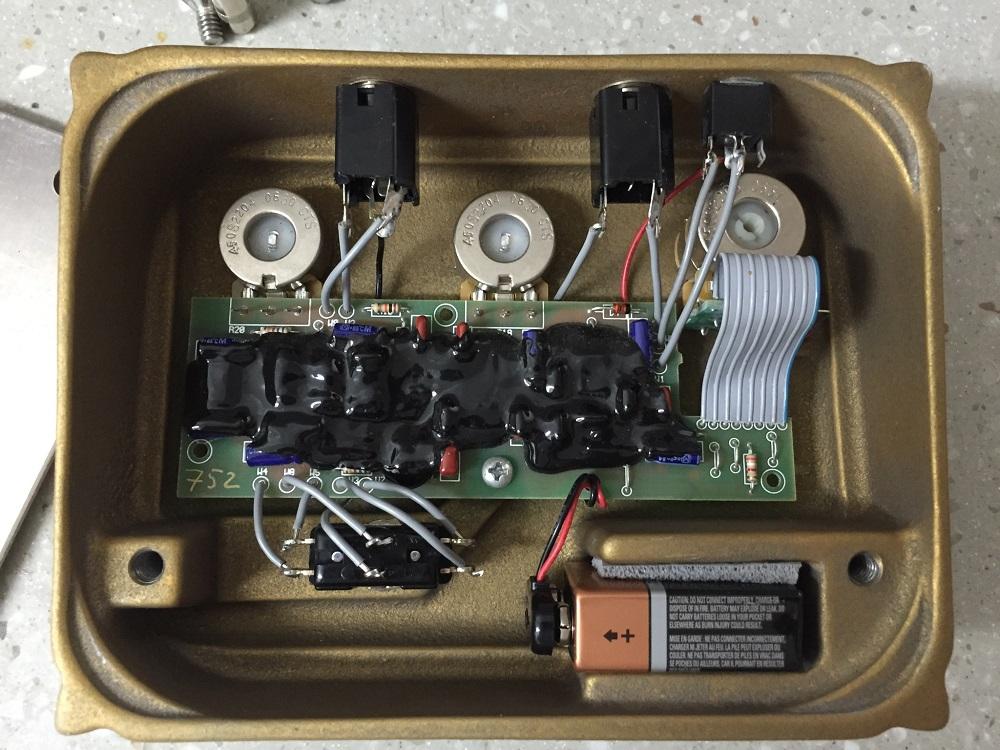
Interior of a Klon Centaur with the circuit covered in epoxy (this and the opening image are from accordo.it)
It was an instant success. Guitarists such as Jeff Beck, David Glimour, Eric Johnson immediately adopted it and the demand grew to such an extent that Bill Finnegan could not keep up. Eventually he stopped production. Only 8000 examples exist. Many famous guitarists have one. John Mayer notoriously uses it in combination with the Tubescreamer. In 2014, Finnegan tried resuming with the help of a company known as Jay Rockett Audio Designs. They created a smaller but completely similar red pedal, the KTR Certaur. But it didn’t last long. Thus the production of clones (which in this case lends itself very much to puns) was unleashed. Today there are all kinds of them and for all budgets.
Whoever has an original unit, maybe bought for a couple of hundred bucks in the early 2000s, has made a gigantic bargain: it takes thousands of euros to get one. When I started playing in a band again in the mid-2010s, looking for used pedals I became aware of the various types of overdrive and thus of both the Tubescreamer and the Klon. At the time, a Klon Centaur had to be around 400 euros, which is still an absurd amount of money for someone like me. As time went on, I saw it approaching the 1000 euro mark quickly, and then it skyrocketed to around 10 thousand!
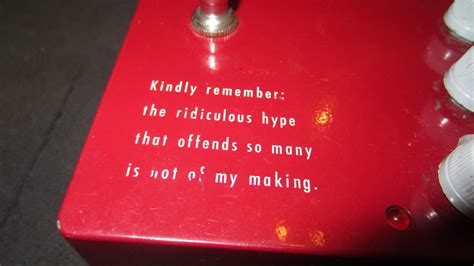
Bill Finnegan resumed production of the Klon with J. Rockett for a while, calling it the KTR Centaur, but wanted to clarify: “Kindly remember: the ridiculous hype that offends so many is not of my making”
Bill Finnegan had covered the circuit with a black epoxy resin so that it would be difficult to recreate it. With modern technology, reverse engineering of anything is very easy and many Klon clones do indeed sound extremely similar. Jay Rockett had helped build the last Klon clones. From that experience he created the first clone, the J. Rockett Archer. Probably, given his track record, his Klon clone can be considered the closest to the original. It costs well over 200e if not 300e new. But many have created very good replicas, even the Chinese Mosky can replicate it very well for 20-30e for a new pedal called the Horse (they all played with the idea of the centaur)! Others like Way Huge thoughtfully hinted at a conniving plot by calling their Klon clone ‘Conspiracy Theory’ (around 100e used). Finnegan himself wnated to put it clear on his own clone, the KTR Centaur. It carries a statement from Finnegan himself about how all this exaggeration over his creation was not of his making. The KTR costs around 400e used.
It takes a lot of money even to get hold of an original Japanese-made TS808 or TS9 from the 80s, but nothing comes close to the insanity that has been achieved with the Klon and its clones. Josh Scott of JHS, a very nice guy who makes guitar pedals, posted a video on his famous channel a few months ago in which he showed how it was impossible to recognise the sound of his original Klon from that of the Bad Monkey clone from Digitech, a discontinued pedal that could be bought used for around 50e. Within a short space of time it was selling for well over EUR 10,000! If this is not madness…. (of course we’ll have to see if any crazy person actually buys it for that kind of money!). Good Josh had to respond to the inevitable attacks by urging people to listen to their ears and not to market trends… right on…
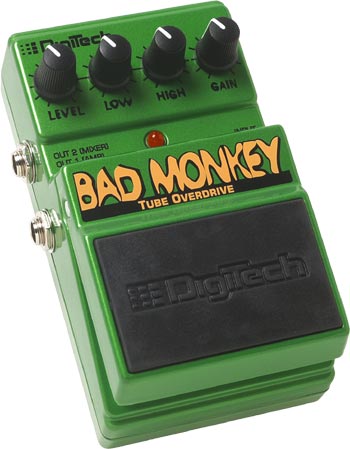
The madness of a discontinued pedal, available used for around 50e, now sold for 10k! Meet the Digitech Bad Monkey (image from accordo.it)
And do I have a clone in all this? I had one, the Conspiracy Theory. Very nice and well built. One of the most credited as sound fidelity. But then I wasn’t convinced that I actually liked overdrives like the Tubescreamer or Klon. I liked transparent overdrives, a rather imprecise adjective but it means that unlike Tubescreamer and Klon, they do not attenuate bass and treble while emphasising the mids. I used to love my Fulltone OCD (which apparently in the 1.7 version I have is not so poor in the mids, yet boosted by a Tubescreamer makes a killer pair). I tried other transparent overdrives but eventually went back to my first love – which you never forget, the Fulltone OCD.
The case of Fulltone is also an example of the madness generated by the Internet and the consequent speed at which news travel (and the haste with which some people post what is on their minds without thinking beforehand): Mike Fuller, the founder of Fulltone, on the occasion of the riots that broke out in California after the police killed an unfortunate black man, wrote a post in which he condemned acts of vandalism such as the destruction of storefronts and private goods by some demonstrators and at the same time heavily attacked the inability of the institutions to handle the situation. Obviously Fuller was worried that he too would receive such damage, that he risked losing everything and, certainly not being racist, he was not happy about what had happened to the poor victim and was aware of the legitimacy of the protests – he just did not understand why shops, cars and various activities could be destroyed with impunity. But none of this transpired out from his post and he was attacked by haters who invited to boycotting his products (even major sites distanced themselves from Fuller and declared they would no longer sell his products – though today they are listed again).
Mike Fuller later explained his real motives and apologised for offending someone without intention. But the fact remains that Fulltone’s closed down after a short time and perhaps I have a nice investment on my hands. It is recent news that Fuller has reopened Fulltone in Nashville, where everything is cheaper, in collaboration with another local company; they have resumed production of their pedals, but they will be identifiable by the version number stamped on the front to distinguish them from the earlier Californian production… so maybe my OCD will continue to increase in value….? Who knows…
Anyway, after experimenting a bit I went back to using a Tubescreamer (a TS808 mini, cheap, just in case I wasn’t convinced). I learned to appreciate it and now I couldn’t do without a TS; maybe one day I’ll get a full-size one (a replica, not an unaffordable original). Playing John Mayer I really need it. At a time when I had a thing for made-in-Italy pedals, I also bought a very good Masotti OD-Box, which, thanks to an external switch, quickly shifts from a Tubescreamer-type sound to more modern sounds. And I began to wonder whether I needed the Klon as well. Today my ambition is to have all the key pedals, the most iconic ones. An original Klon is impossible but a J. Rockett Archer is perhaps the one closest to the ‘DNA’ of the original and you can still find early versions at affordable prices. So I got one to put right after the OCD, going back to a classic configuration as I did some time ago: TS > OCD > Klon. I will definitely get a standard TS808 instead of the mini (which sounds great anyway). I’ll be reselling one of my Italian pedals, reluctantly: they are great, really excellent, but they don’t have much resale potential and in my situation it’s important to be able to go back if I change idea in this area. The ‘classic’ pedals are resellable at the same price as when you buy them used. That’s the only way I can create my own sound, as a humble small-time guitarist.
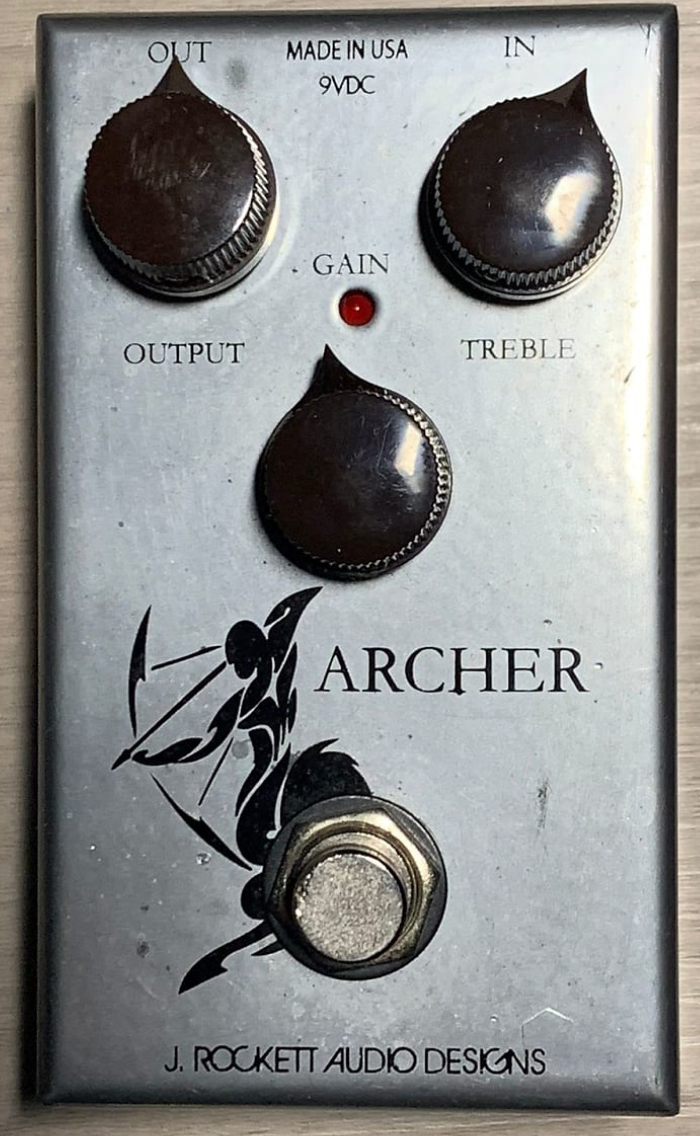
“My” Klon clone: I pulled the trigger on the J. Rockett Archer, built by the company that had helped Bill Finnegan in the production of the KTR, so it should be pretty close to the originals
However, if I had bought a real Klon in the mid-2010s, when perhaps I too could have afforded one…. Ah! What a bummer! 😉
